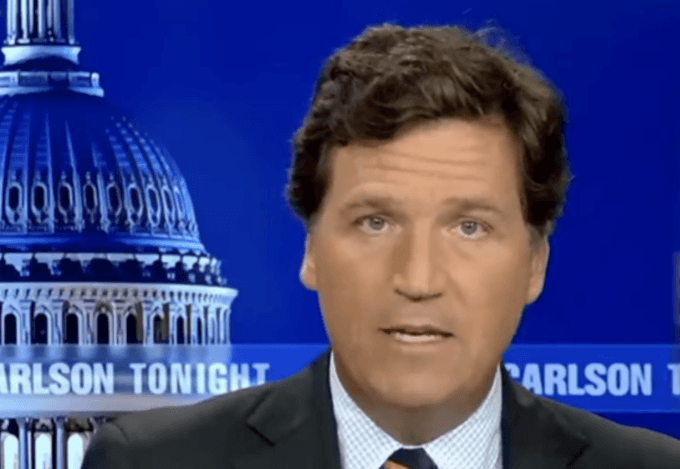NOVANEWS
US may send 1,000 troops to Syria; Trump’s ‘hard-power budget’; The messy future of Russian spying; New kinds of war demand a new defensive alliance; and just a bit more…

The Pentagon is considering sending 1,000 more ground troops to Syria to help shape the offensive against Islamic State-held Raqqa before it formally kicks off, the Washington Post reported Wednesday. The plans are described as one of many granular additions to the “broad outline” for defeating ISIS that Defense Secretary James Mattis presented to President Trump at the end of February, the Post writes. “Gen. Joseph Votel, head of U.S. Central Command, has been filling in more details for that outline, including by how much to increase the U.S. ground presence in Syria. Votel is set to forward his recommendations to Mattis by the end of the month, and the Pentagon secretary is likely to sign off on them, according to a defense official familiar with the deliberations.”
The mission: “The new troops, if sent, would be focused on supporting Kurdish and Arab fighters in northern Syria battling the Islamic State. Under the plan, the added American forces would act primarily as advisers, offering expertise on bomb disposal and coordinating air support for the coalition of Kurds and Arabs, also known as the Syrian Democratic Forces.”
The additional U.S. elements “would probably come from parts of both the 24th Marine Expeditionary Unit — a flotilla of ships loaded with 2,200 Marines that is now steaming toward the region — and the U.S. Army’s 82nd Airborne Division, from which 2,500 troops are headed to Kuwait. These conventional troops would supplement the Special Operations forces already on the ground and operate much like their counterparts fighting in the Iraqi city of Mosul.”
Where the U.S. troop count currently stands in Syria: “About 500 U.S. Special Operations forces are already in Syria operating alongside the SDF, in addition to about 250 Rangers and 200 Marines.”
If approved by Trump, the plans “would potentially double the number of U.S. forces in Syria and increase the potential for direct U.S. combat involvement in a conflict that has been characterized by confusion and competing priorities among disparate forces.”
For example, “Turkey has said it will send ground forces to help seize Raqqa, but that option is complicated by Turkish insistence that its participation depends on the United States severing ties with Syrian Kurdish fighters, called the People’s Protection Units, or YPG. While the Pentagon considers the YPG to be the most effective local Syrian fighting force, Turkey has labeled it a terrorist group.”
Speaking of Turkey, its defense minister wants answers on the “diplomatic” situation in Manbij, Syria, saying “a military approach would only be considered if diplomacy failed,” Reuters reports this morning.
And on the diplomatic note, Syrian Kurds are asking President Trump to establish safe zones in territory held by the Syrian Democratic Forces in the north. Kurdish ARA News has more on a region of Syria the Kurds say more than 150,000 have come for protection during Raqqa offensive shaping operations.
Video dispatch from Raqqa: The Syrian Democratic Forces have found a complex ISIS tunnel system complete with pillboxes and blast walls in the vicinity of Raqqa. Watch footage of their recent finds, here.
Apropos of nothing: Take a look at Syria’s newest troops—many of whom appear to be quite old, as the Middle East Institute’s Charles Lister points out.
Trump’s “hard power” budget due today. “The Trump administration will roll out two budget plans on Thursday: one that amends the Obama administration’s 2017 spending plan, and another for fiscal 2018, which begins on Oct. 1,” Defense One’s Marcus Weisgerber reports. The updated 2017 plan includes a $30 billion supplemental fund for “defense and primarily border” security, Office of Management and Budget director Mick Mulvaney told reporters Wednesday.
About that border security: The Department of Homeland Security’s budget would see a 6 percent increase under the Trump plan, which includes $4.1 billion for the southern border wall: $1.5 billion in the 2017 supplemental and $2.6 billion in 2018.
The dominant message: Under Trump’s plan, money would shift from foreign aid projects into military and security programs, Weisgerber writes.
(ICYMI: The White House proposal, like similar ones under Obama, tries to ignore legal spending caps.)
Want to make sense of the defense budget math? The Center for Strategic and International Studies’ Todd Harrison has a chart for you, here.
How Reuters frames the plan: “Military wins; environment and aid lose big.” And check out the Reuters graphic that lays out “winners and losers,” here.
How AP frames it: “The $54 billion boost for the military is the largest since President Ronald Reagan’s Pentagon buildup in the 1980s, promising immediate money for troop readiness, the fight against Islamic State militants and procurement of new ships, fighter jets and other weapons. The 10 percent Pentagon boost is financed by $54 billion in cuts to foreign aid and domestic agencies that had been protected by former President Barack Obama.”
More from Reuters: “The plan earmarks the new funds to accelerate the fight against Islamic State militants, reverse Army troop reductions, build more ships for the Navy and ramp up the Air Force – including by purchasing additional F-35 fighter jets, built by Lockheed Martin…The budget also requests $12 billion in so-called Overseas Contingency Operations, or OCO, funding for extraordinary costs, chiefly in war zones such as Afghanistan, Iraq and Syria. No comparison was provided for the current year’s OCO spending.”
And on the foreign aid side, “The combined budget for the State Department and U.S. Agency for International Development, or USAID, would fall by 28 percent, with funding cuts for the United Nations, climate change and cultural exchange programs. The plan preserves $3.1 billion in security aid to Israel.” That, here. (ICYMI: the generals fighting ISIS say cutting soft-power funds will hurt their war efforts.)



